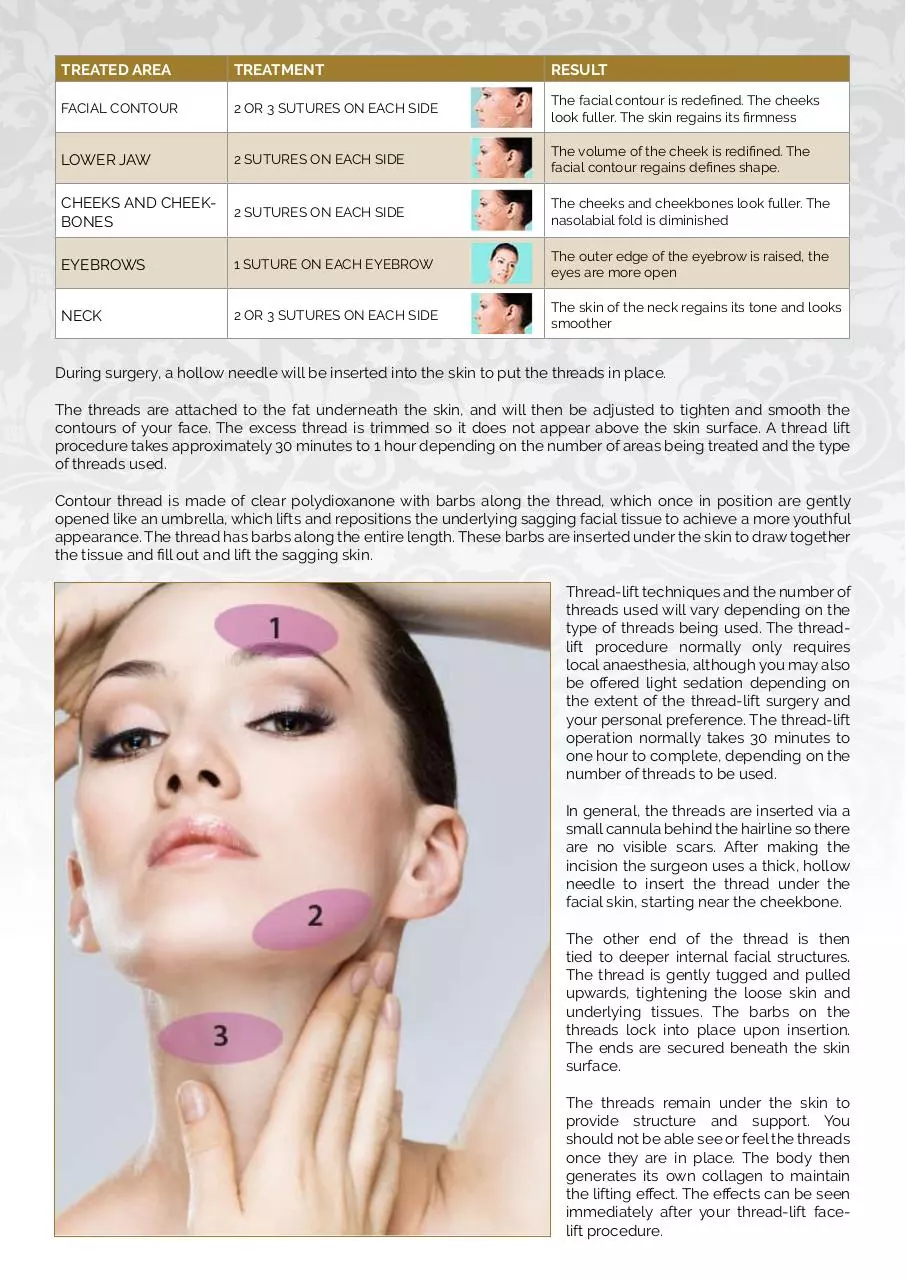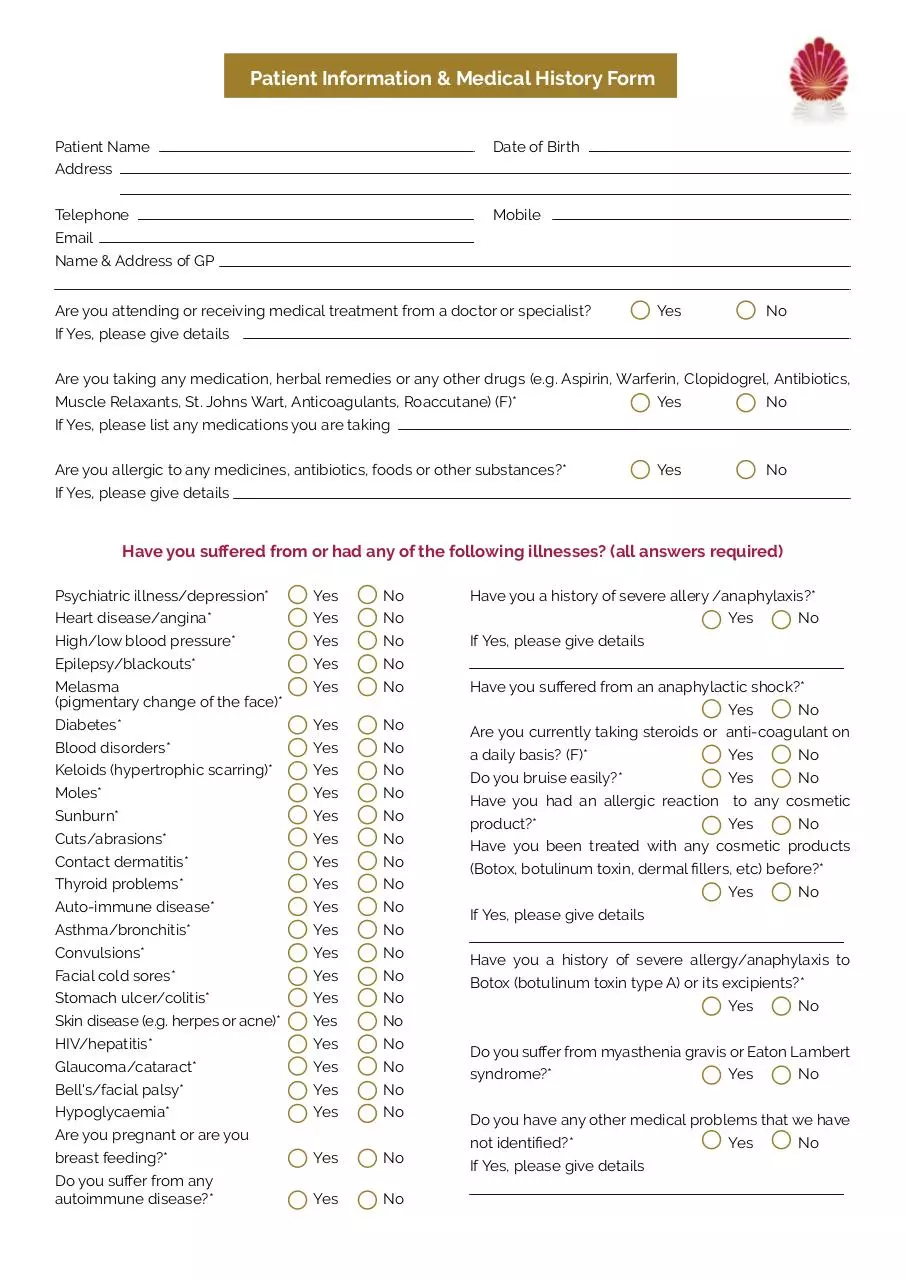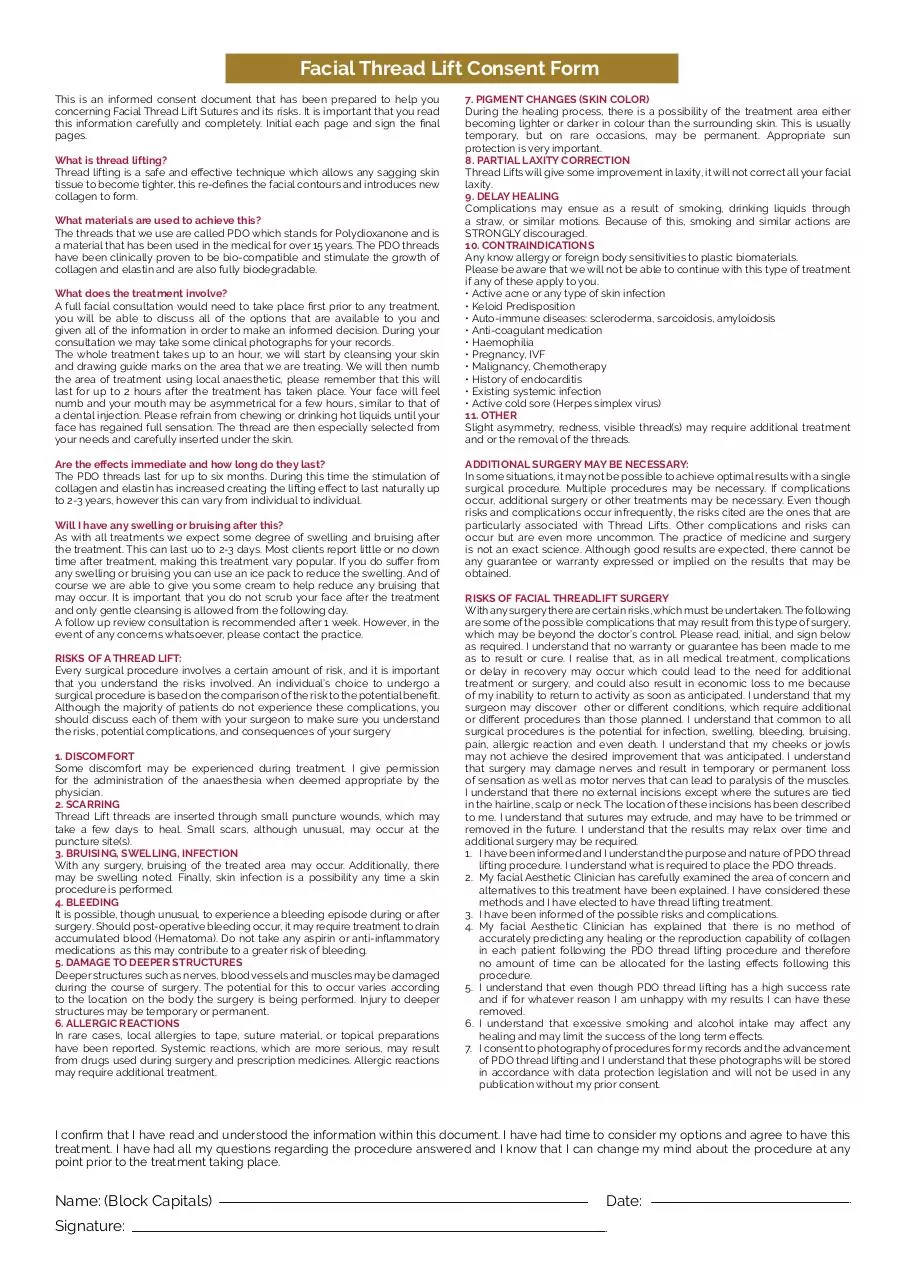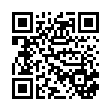BD threadlift screen (PDF)
File information
This PDF 1.4 document has been generated by Adobe InDesign CS3 (5.0) / Adobe PDF Library 8.0, and has been sent on pdf-archive.com on 18/08/2016 at 15:19, from IP address 86.176.x.x.
The current document download page has been viewed 1269 times.
File size: 1.48 MB (6 pages).
Privacy: public file





File preview
THREADLIFT FACELIFT
Lifting
Contouring
Vo l u m i z i n g
Stimulating Collagen production
Thread Lifts
A thread-lift, also known as feather lift surgery, is a delicate
cosmetic surgery procedure to gently lift sagging facial skin
to produce a smoother, more youthful appearance. If gravity
has started to take its toll on your face, a thread lift may be
a less invasive alternative to a face lift to rejuvenate the face
without the risks and downtime associated with surgery.
The thread-lift procedure involves very fine surgical sutures
being inserted in to the soft tissue of the face to lift and
support sagging areas. It cannot offer the same results as a
full face lift but is a good option for a more subtle rejuvenation.
And while thread lifts generally produce noticeable results
almost immediately and with less risk and inconvenience
than more intensive procedures, thread lift costs are quite
reasonable compared to traditional options.
Am I a Candidate?
As we age, the effects of gravity become more noticeable
on our faces. The supporting tissue of the cheeks weakens, facial fat is lost, the jawline that used to be firm and
tight forms jowls, the edges of the mouth drift down towards the chin, and the lower face and neck sags. Suitable
candidates for a thread lift procedure are those who are experiencing mild to moderate sagging of facial tissues.
Suitable candidates for thread-lift surgery are normally women and men aged 35 to 65 who want a more effective
and permanent facial lifting effect than fillers and Botox alone can provide, but who do not want or are not ready for
a full surgical cosmetic procedure such as a face-lift or brow-lift.
If you have any of the following concerns you may be a candidate for a thread-lift:
Moderate sagging and laxity of the skin in the
cheeks, eyebrows, eyes, jowls and neck
Younger patients with cheek and brow sagging
caused by weakened muscles (ptosis)
Effects of a previous face-lift or neck-lift are
wearing off
Patients with realistic expectations for the
outcome of their thread-lift surgery
Unsuitable candidates for thread-lift surgery include:
Patients with very thin, fragile and slack skin
caused by the aging process
Patients with little facial fat
Patients with heavy jowls and pronounced
sagging in the facial area
Patients who do not have realistic expectations
for the thread-lift procedure
Before Surgery - Before you have a thread-lift you will need to have
a consultation with your surgeon to see if you are a suitable candidate.
The consultation is your opportunity to ask any questions you might
have about the procedure. While a thread lift can deliver great results,
it may be the case that you require a more invasive face lift procedure
to achieve the desired results. After examining you your surgeon will
explain your options and recommend what type of thread-lift you may
need to achieve the best result.
During Surgery
The thread-lift procedure can be performed to lift and support:
Sagging eyebrows
Sagging cheeks
Asymmetric eyebrows
The mid and lower face and neck
Naso-labial folds
TREATED AREA
TREATMENT
RESULT
FACIAL CONTOUR
2 OR 3 SUTURES ON EACH SIDE
The facial contour is redefined. The cheeks
look fuller. The skin regains its firmness
LOWER JAW
2 SUTURES ON EACH SIDE
The volume of the cheek is redifined. The
facial contour regains defines shape.
CHEEKS AND CHEEKBONES
2 SUTURES ON EACH SIDE
The cheeks and cheekbones look fuller. The
nasolabial fold is diminished
EYEBROWS
1 SUTURE ON EACH EYEBROW
The outer edge of the eyebrow is raised, the
eyes are more open
NECK
2 OR 3 SUTURES ON EACH SIDE
The skin of the neck regains its tone and looks
smoother
During surgery, a hollow needle will be inserted into the skin to put the threads in place.
The threads are attached to the fat underneath the skin, and will then be adjusted to tighten and smooth the
contours of your face. The excess thread is trimmed so it does not appear above the skin surface. A thread lift
procedure takes approximately 30 minutes to 1 hour depending on the number of areas being treated and the type
of threads used.
Contour thread is made of clear polydioxanone with barbs along the thread, which once in position are gently
opened like an umbrella, which lifts and repositions the underlying sagging facial tissue to achieve a more youthful
appearance. The thread has barbs along the entire length. These barbs are inserted under the skin to draw together
the tissue and fill out and lift the sagging skin.
Thread-lift techniques and the number of
threads used will vary depending on the
type of threads being used. The threadlift procedure normally only requires
local anaesthesia, although you may also
be offered light sedation depending on
the extent of the thread-lift surgery and
your personal preference. The thread-lift
operation normally takes 30 minutes to
one hour to complete, depending on the
number of threads to be used.
In general, the threads are inserted via a
small cannula behind the hairline so there
are no visible scars. After making the
incision the surgeon uses a thick, hollow
needle to insert the thread under the
facial skin, starting near the cheekbone.
The other end of the thread is then
tied to deeper internal facial structures.
The thread is gently tugged and pulled
upwards, tightening the loose skin and
underlying tissues. The barbs on the
threads lock into place upon insertion.
The ends are secured beneath the skin
surface.
The threads remain under the skin to
provide structure and support. You
should not be able see or feel the threads
once they are in place. The body then
generates its own collagen to maintain
the lifting effect. The effects can be seen
immediately after your thread-lift facelift procedure.
Patient Information & Medical History Form
Patient Name
Address
Date of Birth
Telephone
Name & Address of GP
Mobile
Are you attending or receiving medical treatment from a doctor or specialist?
If Yes, please give details
Yes
No
Are you taking any medication, herbal remedies or any other drugs (e.g. Aspirin, Warferin, Clopidogrel, Antibiotics,
Muscle Relaxants, St. Johns Wart, Anticoagulants, Roaccutane) (F)*
Yes
No
If Yes, please list any medications you are taking
Are you allergic to any medicines, antibiotics, foods or other substances?*
If Yes, please give details
Yes
No
Have you suffered from or had any of the following illnesses? (all answers required)
Psychiatric illness/depression*
Heart disease/angina*
High/low blood pressure*
Epilepsy/blackouts*
Melasma
(pigmentary change of the face)*
Diabetes*
Blood disorders*
Keloids (hypertrophic scarring)*
Moles*
Sunburn*
Cuts/abrasions*
Contact dermatitis*
Thyroid problems*
Auto-immune disease*
Asthma/bronchitis*
Convulsions*
Facial cold sores*
Stomach ulcer/colitis*
Skin disease (e.g. herpes or acne)*
HIV/hepatitis*
Glaucoma/cataract*
Bell's/facial palsy*
Hypoglycaemia*
Are you pregnant or are you
breast feeding?*
Do you suffer from any
autoimmune disease?*
Yes
Yes
Yes
Yes
Yes
No
No
No
No
No
Yes
Yes
Yes
Yes
Yes
Yes
Yes
Yes
Yes
Yes
Yes
Yes
Yes
Yes
Yes
Yes
Yes
Yes
No
No
No
No
No
No
No
No
No
No
No
No
No
No
No
No
No
No
Yes No
Yes No
Have you a history of severe allery /anaphylaxis?*
Yes No
If Yes, please give details
Have you suffered from an anaphylactic shock?*
Yes No
Are you currently taking steroids or anti-coagulant on
a daily basis? (F)*
Yes No
Do you bruise easily?*
Yes No
Have you had an allergic reaction to any cosmetic
product?*
Yes No
Have you been treated with any cosmetic products
(Botox, botulinum toxin, dermal fillers, etc) before?*
Yes No
If Yes, please give details
Have you a history of severe allergy/anaphylaxis to
Botox (botulinum toxin type A) or its excipients?*
Yes No
Do you suffer from myasthenia gravis or Eaton Lambert
syndrome?*
Yes No
Do you have any other medical problems that we have
not identified?*
Yes No
If Yes, please give details
Facial Thread Lift Consent Form
This is an informed consent document that has been prepared to help you
concerning Facial Thread Lift Sutures and its risks. It is important that you read
this information carefully and completely. Initial each page and sign the final
pages.
What is thread lifting?
Thread lifting is a safe and effective technique which allows any sagging skin
tissue to become tighter, this re-defines the facial contours and introduces new
collagen to form.
What materials are used to achieve this?
The threads that we use are called PDO which stands for Polydioxanone and is
a material that has been used in the medical for over 15 years. The PDO threads
have been clinically proven to be bio-compatible and stimulate the growth of
collagen and elastin and are also fully biodegradable.
What does the treatment involve?
A full facial consultation would need to take place first prior to any treatment,
you will be able to discuss all of the options that are available to you and
given all of the information in order to make an informed decision. During your
consultation we may take some clinical photographs for your records.
The whole treatment takes up to an hour, we will start by cleansing your skin
and drawing guide marks on the area that we are treating. We will then numb
the area of treatment using local anaesthetic, please remember that this will
last for up to 2 hours after the treatment has taken place. Your face will feel
numb and your mouth may be asymmetrical for a few hours, similar to that of
a dental injection. Please refrain from chewing or drinking hot liquids until your
face has regained full sensation. The thread are then especially selected from
your needs and carefully inserted under the skin.
Are the effects immediate and how long do they last?
The PDO threads last for up to six months. During this time the stimulation of
collagen and elastin has increased creating the lifting effect to last naturally up
to 2-3 years, however this can vary from individual to individual.
Will I have any swelling or bruising after this?
As with all treatments we expect some degree of swelling and bruising after
the treatment. This can last uo to 2-3 days. Most clients report little or no down
time after treatment, making this treatment vary popular. If you do suffer from
any swelling or bruising you can use an ice pack to reduce the swelling. And of
course we are able to give you some cream to help reduce any bruising that
may occur. It is important that you do not scrub your face after the treatment
and only gentle cleansing is allowed from the following day.
A follow up review consultation is recommended after 1 week. However, in the
event of any concerns whatsoever, please contact the practice.
RISKS OF A THREAD LIFT:
Every surgical procedure involves a certain amount of risk, and it is important
that you understand the risks involved. An individual’s choice to undergo a
surgical procedure is based on the comparison of the risk to the potential benefit.
Although the majority of patients do not experience these complications, you
should discuss each of them with your surgeon to make sure you understand
the risks, potential complications, and consequences of your surgery
1. DISCOMFORT
Some discomfort may be experienced during treatment. I give permission
for the administration of the anaesthesia when deemed appropriate by the
physician.
2. SCARRING
Thread Lift threads are inserted through small puncture wounds, which may
take a few days to heal. Small scars, although unusual, may occur at the
puncture site(s).
3. BRUISING, SWELLING, INFECTION
With any surgery, bruising of the treated area may occur. Additionally, there
may be swelling noted. Finally, skin infection is a possibility any time a skin
procedure is performed.
4. BLEEDING
It is possible, though unusual, to experience a bleeding episode during or after
surgery. Should post-operative bleeding occur, it may require treatment to drain
accumulated blood (Hematoma). Do not take any aspirin or anti-inflammatory
medications as this may contribute to a greater risk of bleeding.
5. DAMAGE TO DEEPER STRUCTURES
Deeper structures such as nerves, blood vessels and muscles may be damaged
during the course of surgery. The potential for this to occur varies according
to the location on the body the surgery is being performed. Injury to deeper
structures may be temporary or permanent.
6. ALLERGIC REACTIONS
In rare cases, local allergies to tape, suture material, or topical preparations
have been reported. Systemic reactions, which are more serious, may result
from drugs used during surgery and prescription medicines. Allergic reactions
may require additional treatment.
7. PIGMENT CHANGES (SKIN COLOR)
During the healing process, there is a possibility of the treatment area either
becoming lighter or darker in colour than the surrounding skin. This is usually
temporary, but on rare occasions, may be permanent. Appropriate sun
protection is very important.
8. PARTIAL LAXITY CORRECTION
Thread Lifts will give some improvement in laxity, it will not correct all your facial
laxity.
9. DELAY HEALING
Complications may ensue as a result of smoking, drinking liquids through
a straw, or similar motions. Because of this, smoking and similar actions are
STRONGLY discouraged.
10. CONTRAINDICATIONS
Any know allergy or foreign body sensitivities to plastic biomaterials.
Please be aware that we will not be able to continue with this type of treatment
if any of these apply to you.
• Active acne or any type of skin infection
• Keloid Predisposition
• Auto-immune diseases: scleroderma, sarcoidosis, amyloidosis
• Anti-coagulant medication
• Haemophilia
• Pregnancy, IVF
• Malignancy, Chemotherapy
• History of endocarditis
• Existing systemic infection
• Active cold sore (Herpes simplex virus)
11. OTHER
Slight asymmetry, redness, visible thread(s) may require additional treatment
and or the removal of the threads.
ADDITIONAL SURGERY MAY BE NECESSARY:
In some situations, it may not be possible to achieve optimal results with a single
surgical procedure. Multiple procedures may be necessary. If complications
occur, additional surgery or other treatments may be necessary. Even though
risks and complications occur infrequently, the risks cited are the ones that are
particularly associated with Thread Lifts. Other complications and risks can
occur but are even more uncommon. The practice of medicine and surgery
is not an exact science. Although good results are expected, there cannot be
any guarantee or warranty expressed or implied on the results that may be
obtained.
RISKS OF FACIAL THREADLIFT SURGERY
With any surgery there are certain risks, which must be undertaken. The following
are some of the possible complications that may result from this type of surgery,
which may be beyond the doctor’s control. Please read, initial, and sign below
as required. I understand that no warranty or guarantee has been made to me
as to result or cure. I realise that, as in all medical treatment, complications
or delay in recovery may occur which could lead to the need for additional
treatment or surgery, and could also result in economic loss to me because
of my inability to return to activity as soon as anticipated. I understand that my
surgeon may discover other or different conditions, which require additional
or different procedures than those planned. I understand that common to all
surgical procedures is the potential for infection, swelling, bleeding, bruising,
pain, allergic reaction and even death. I understand that my cheeks or jowls
may not achieve the desired improvement that was anticipated. I understand
that surgery may damage nerves and result in temporary or permanent loss
of sensation as well as motor nerves that can lead to paralysis of the muscles.
I understand that there no external incisions except where the sutures are tied
in the hairline, scalp or neck. The location of these incisions has been described
to me. I understand that sutures may extrude, and may have to be trimmed or
removed in the future. I understand that the results may relax over time and
additional surgery may be required.
1. I have been informed and I understand the purpose and nature of PDO thread
lifting procedure. I understand what is required to place the PDO threads.
2. My facial Aesthetic Clinician has carefully examined the area of concern and
alternatives to this treatment have been explained. I have considered these
methods and I have elected to have thread lifting treatment.
3. I have been informed of the possible risks and complications.
4. My facial Aesthetic Clinician has explained that there is no method of
accurately predicting any healing or the reproduction capability of collagen
in each patient following the PDO thread lifting procedure and therefore
no amount of time can be allocated for the lasting effects following this
procedure.
5. I understand that even though PDO thread lifting has a high success rate
and if for whatever reason I am unhappy with my results I can have these
removed.
6. I understand that excessive smoking and alcohol intake may affect any
healing and may limit the success of the long term effects.
7. I consent to photography of procedures for my records and the advancement
of PDO thread lifting and I understand that these photographs will be stored
in accordance with data protection legislation and will not be used in any
publication without my prior consent.
I confirm that I have read and understood the information within this document. I have had time to consider my options and agree to have this
treatment. I have had all my questions regarding the procedure answered and I know that I can change my mind about the procedure at any
point prior to the treatment taking place.
Name: (Block Capitals)
Signature:
Date:
What areas can be treated?
Upper Face Lift
Neck Lift
Mid face Lift
Eyebrow repositioning
Lower face Lift
Cheek Repositioning
Chin Augmentation
Full face Lift (with/without neck)
Recovery – Post-procedure you may experience some slight bruising and swelling, which
usually settles in a few days. Recovery is generally quick, with most patients returning to
work the next day or after a few days’ rest, although you may find that your facial movement
is limited for the first week or two.
Benefits - A thread lift procedure uses various different types of suture threads to help lift
and tighten the skin. This process helps to raise the outer brow area, reduce jowling along
the jawline, and reduce sagging in the cheeks, naso-labial (nose to mouth) folds and the
lower eye areas.
Risks and Complications - There are few potential side effects to a thread lift
procedure as the treatment is not as invasive as other lifting procedures. The area treated
will often be sore with some swelling, bruising or puffiness for a few days.
Thread Lift Cost - Prices for a thread lift vary depending on the areas being treated and
can start from approximately £400.
Thread Lift - What you need to know
Post Operative Care Instructions For Facial Threadlifts. - Post Operative Care For First 2 Weeks
FOR 2 WEEKS POST-OP:
• You MUST limit your active movement for at least 1-2 weeks.
• You may require strong pain relief in the first 2-7 days and there will be strong feelings of tightening which will
gradually settle. Please follow the directions on the medication that you have been prescribed. If your pain is not
being controlled with oral pain killers and remains significant please contact Dr Mc Enhill
• Don’t raise your brow, laugh or extend your neck—turning left to right—this is dependent on what region you have
had lifted. Dr McEnhill will instruct you.
• Don’t wear base-ball caps or hats as they will also pull down on your brow.
• Men—avoid shaving because of involuntary grimacing and dragging on your midface.
• The lift will ultimately take 2 weeks to settle.
• If you see any sudden asymmetry between either side of your face or there are other signs of thread breakage
that might have caused loss of lift please call Dr McEnhill
• Do not massage areas of lift or the hairline (e.g. at hairdressers) for at least 2 MONTHS post procedure.
• You will be instructed as to when your follow up appointment will be—you will then have the opportunity to ask
Dr McEnhill further questions post-operatively.
TIPS TO REMEMBER FOR YOUR COMFORT
• Rest as much as you can and try to keep your head elevated at all times. Do not lean over. Try to sleep with your
head up and on your back using 3 to 4 pillows— your posture should be at a 45 degree angle for at least 7 days.
• Apply gauze soaked in ice water to your face and hair line during the first afternoon/evening after surgery
(reapplying as the gauze becomes warm). After several days crush ice placed in a soft washcloth that has been
moistened in cold water and lay it across these areas. Be very careful not to allow the weight of the ice to pull
down on your face.
• No work, exercise, sport or any activity likely to raise your blood pressure for the first 7 days. You may do some
gentle walking in the second week only.
• Do not rub your face. Protect your face from sunburn and accidental knocks for at least 8 weeks.
• Do not use straws for drinking as they will pull on the face muscles.
• Hold your brow in position with the palm of your hand if crying, coughing or sneezing.
• For mid-face procedures a soft diet is recommended in most cases for at least 7 days, ensure you have prepared
for this.
Belmore Dental Implant Clinic
16 Belmore Street, Enniskillen, Co. Fermanagh, BT74 6AA.
Tel: +44 (0)28 6632 9222 From ROI: 048 6632 9222
Email: sinead@belmoredental.co.uk Web: www.belmoredental.co.uk
Download BD-threadlift-screen
BD-threadlift-screen.pdf (PDF, 1.48 MB)
Download PDF
Share this file on social networks
Link to this page
Permanent link
Use the permanent link to the download page to share your document on Facebook, Twitter, LinkedIn, or directly with a contact by e-Mail, Messenger, Whatsapp, Line..
Short link
Use the short link to share your document on Twitter or by text message (SMS)
HTML Code
Copy the following HTML code to share your document on a Website or Blog
QR Code to this page

This file has been shared publicly by a user of PDF Archive.
Document ID: 0000414617.